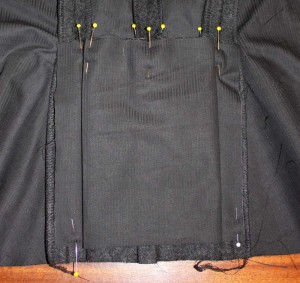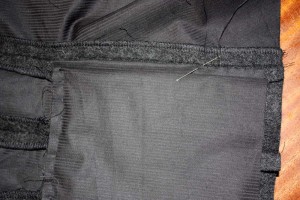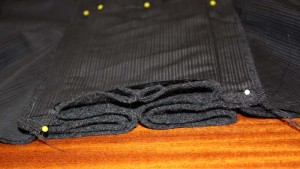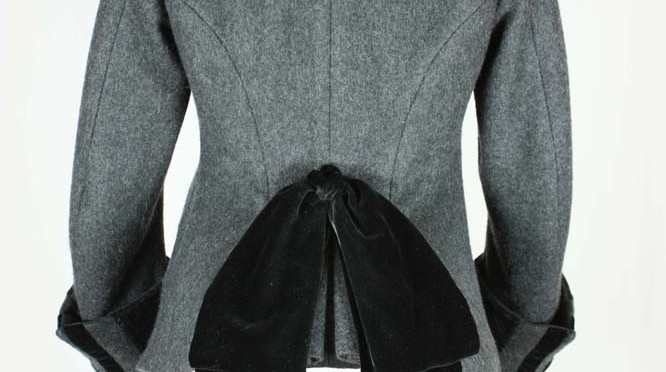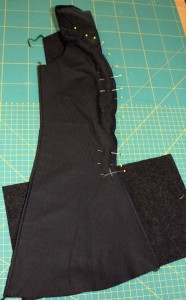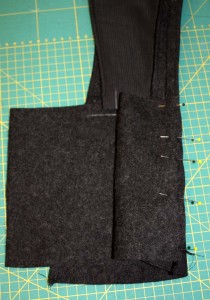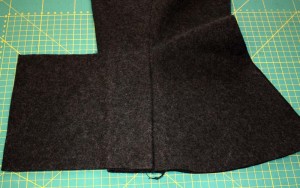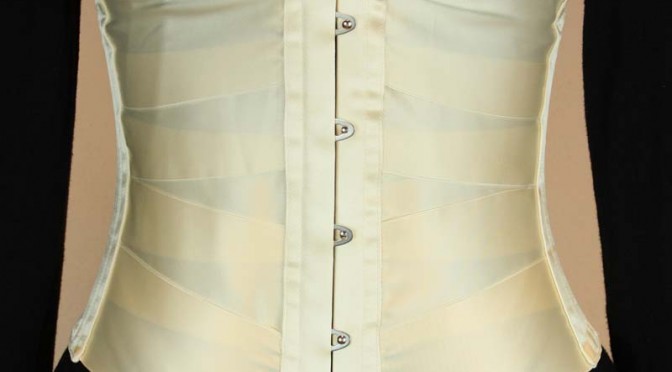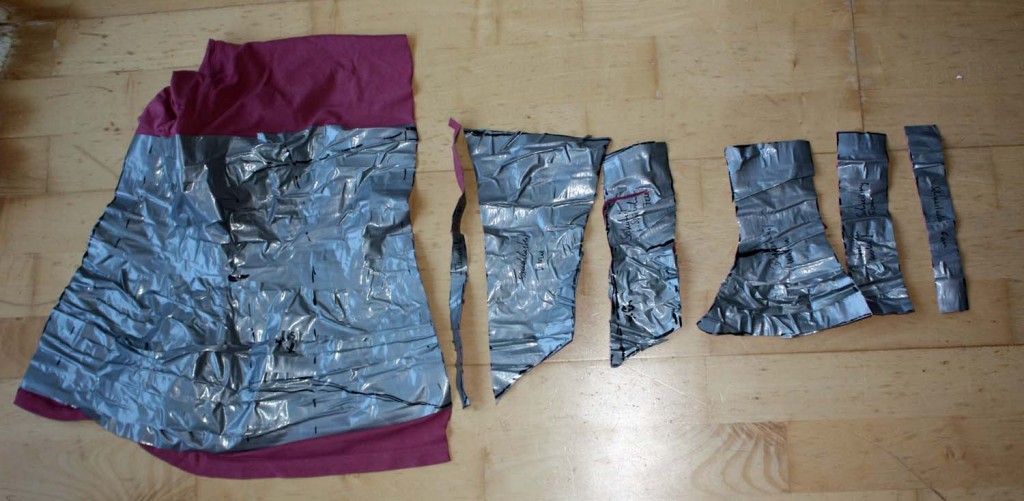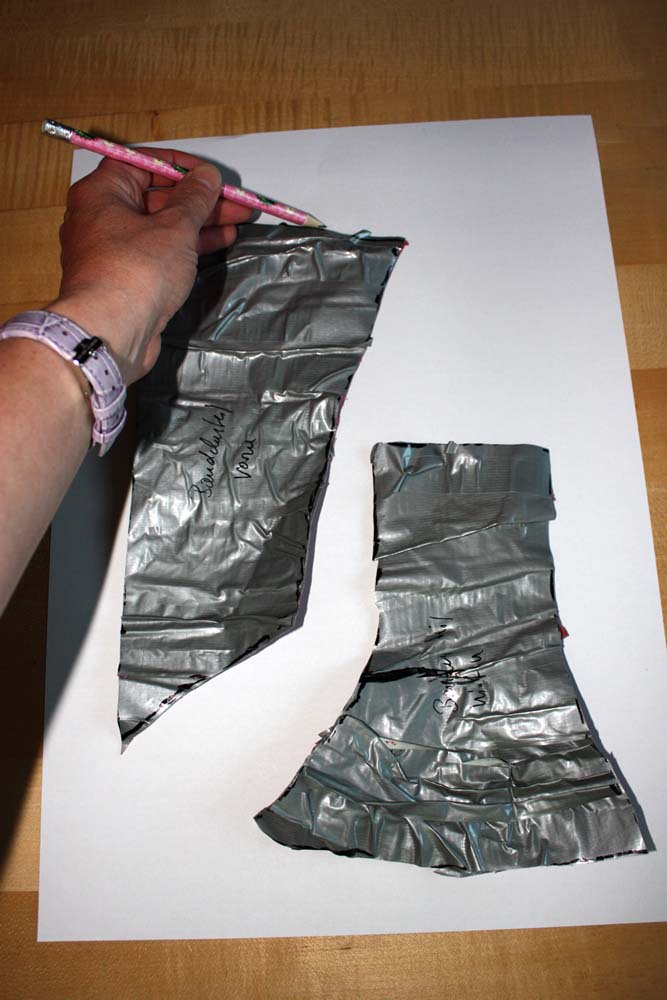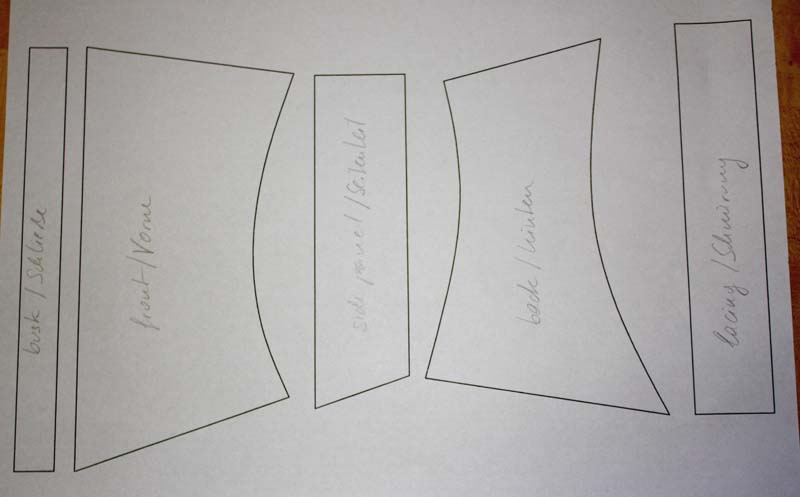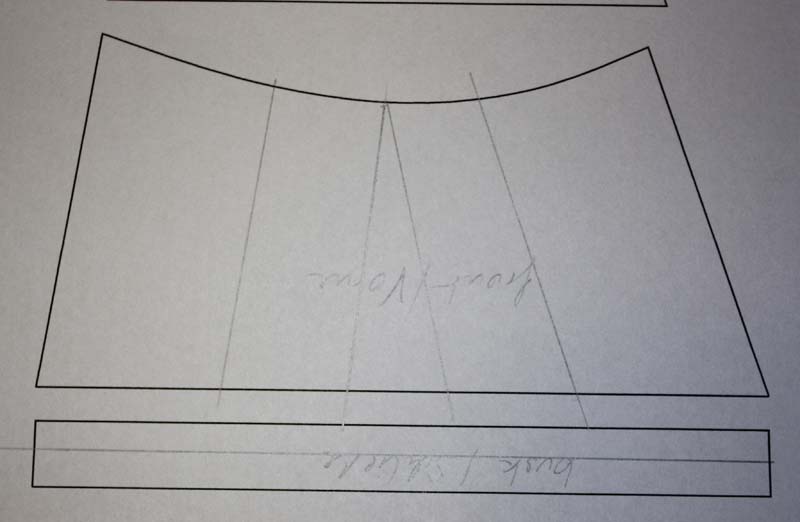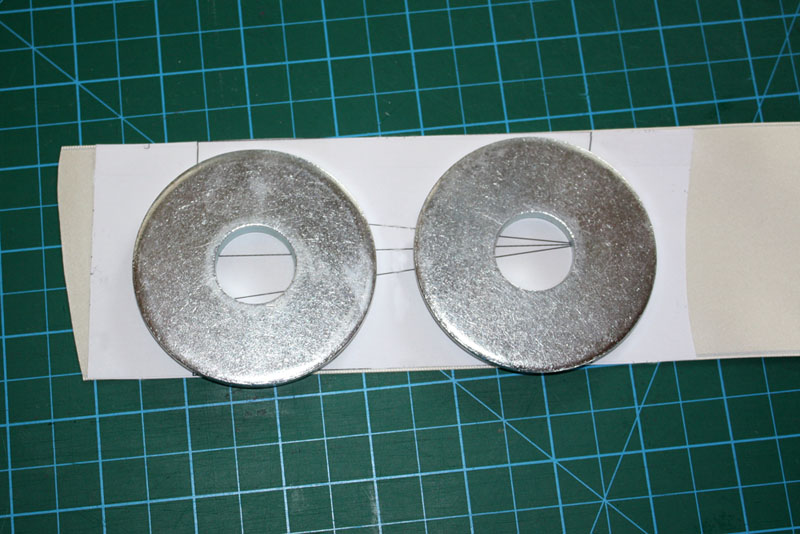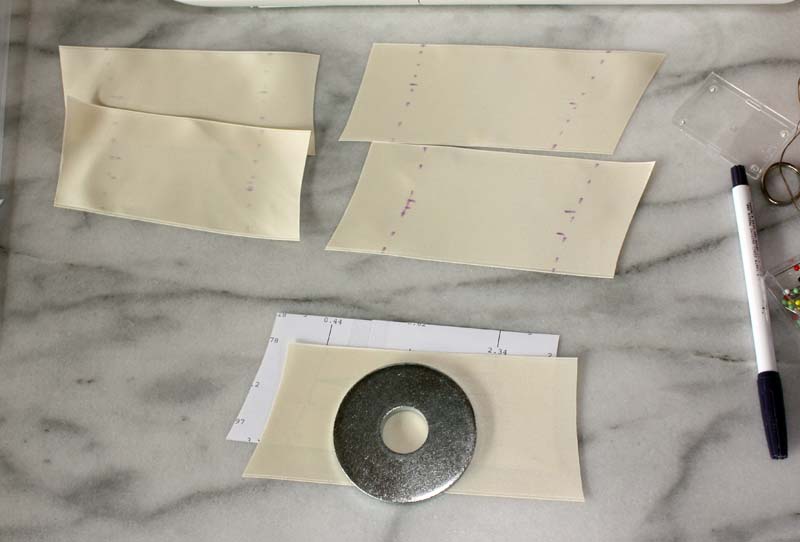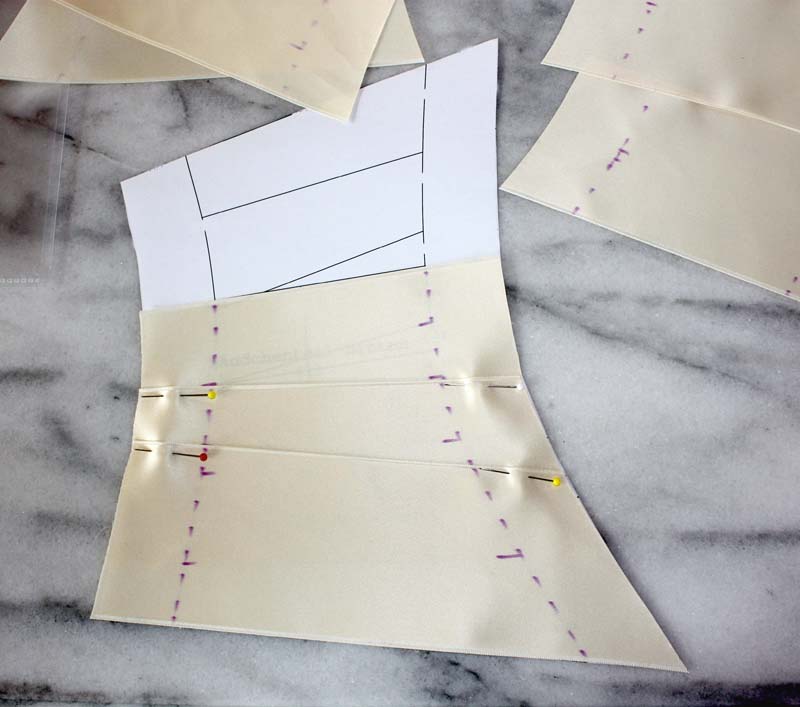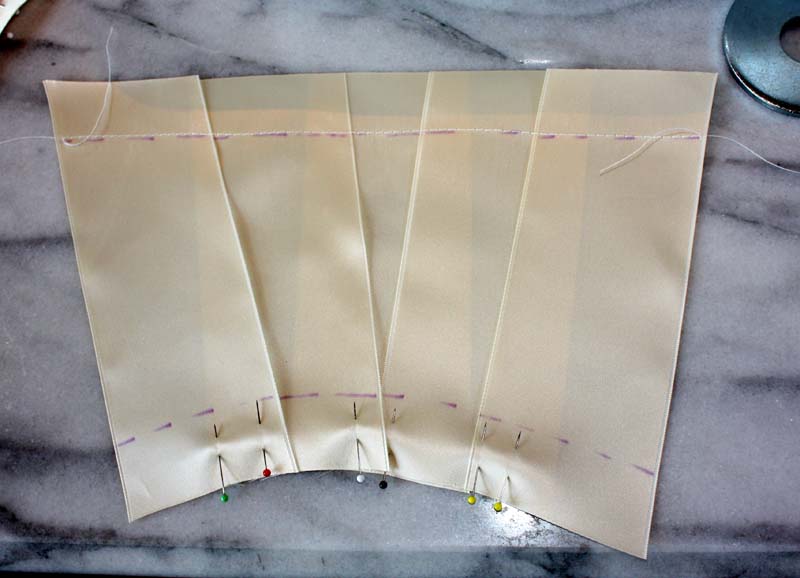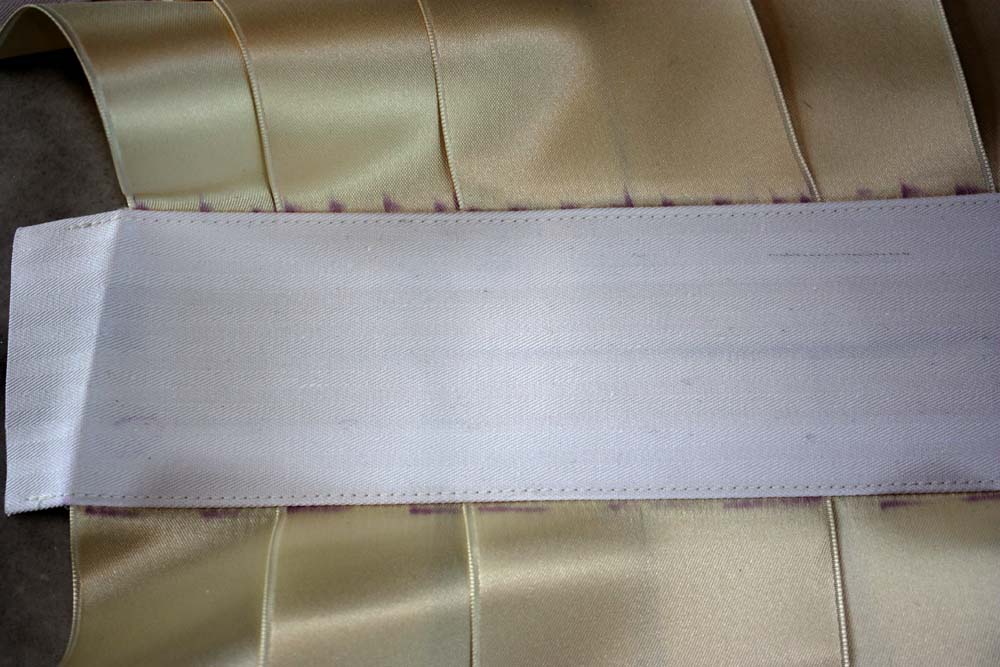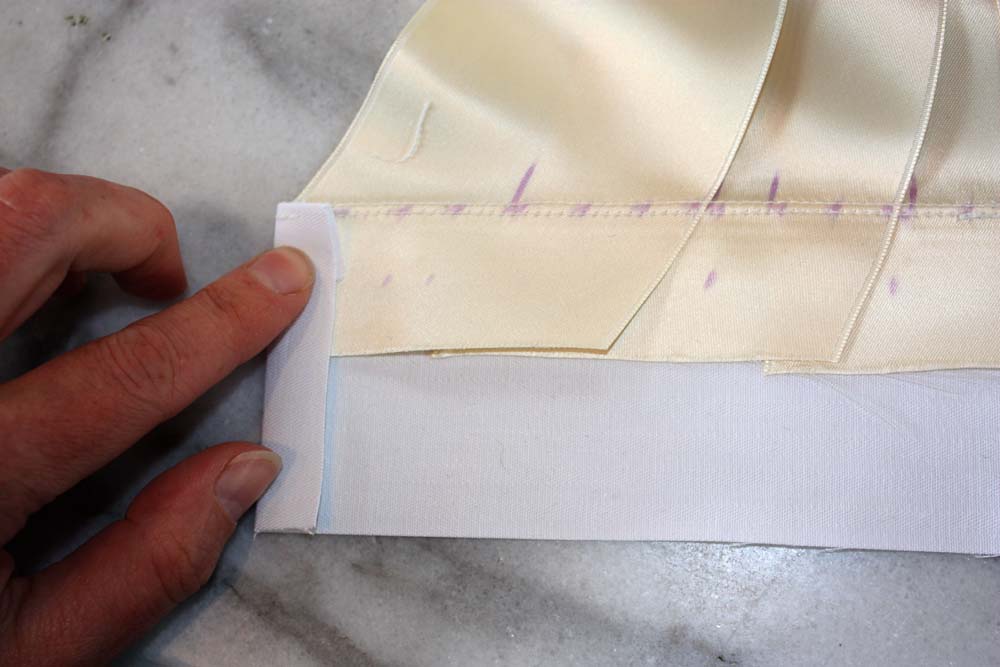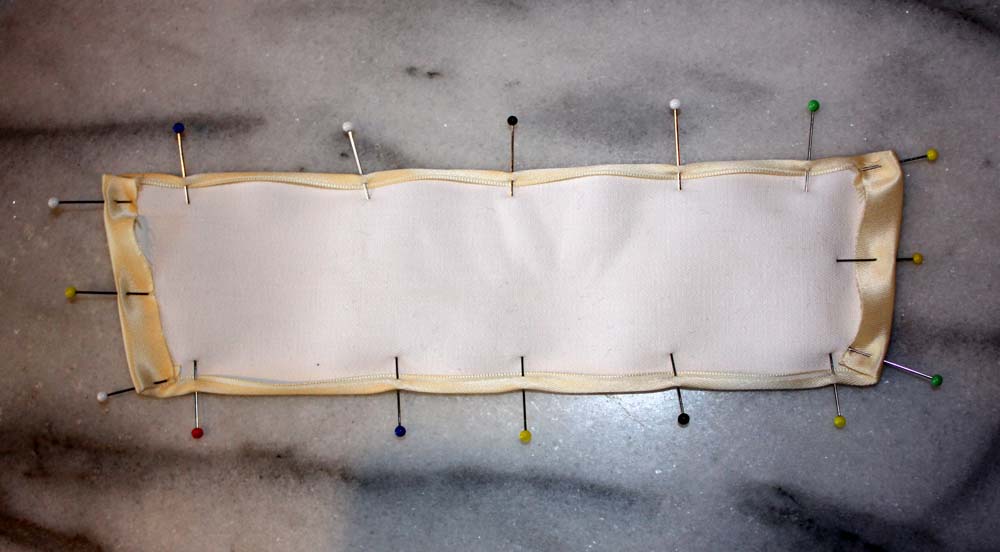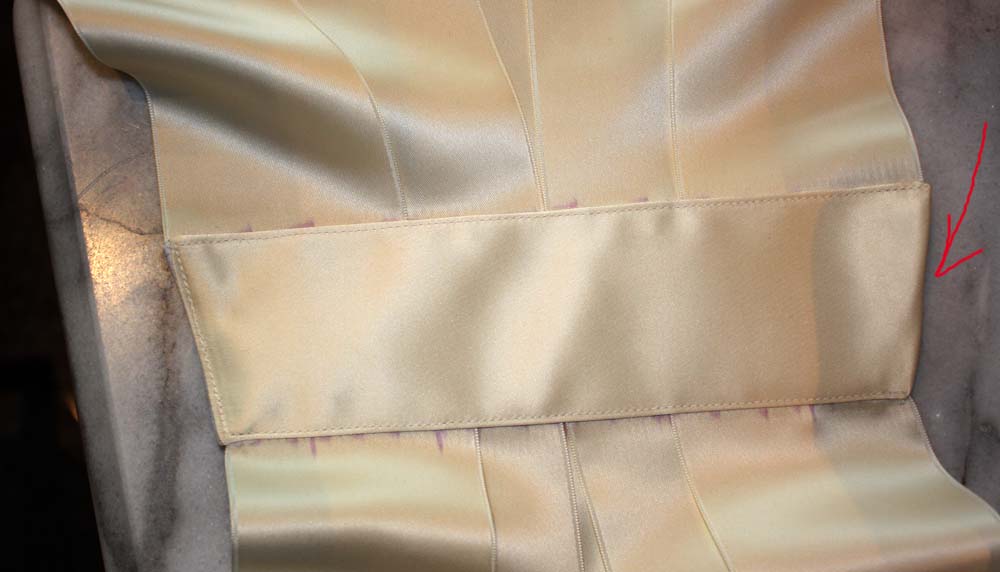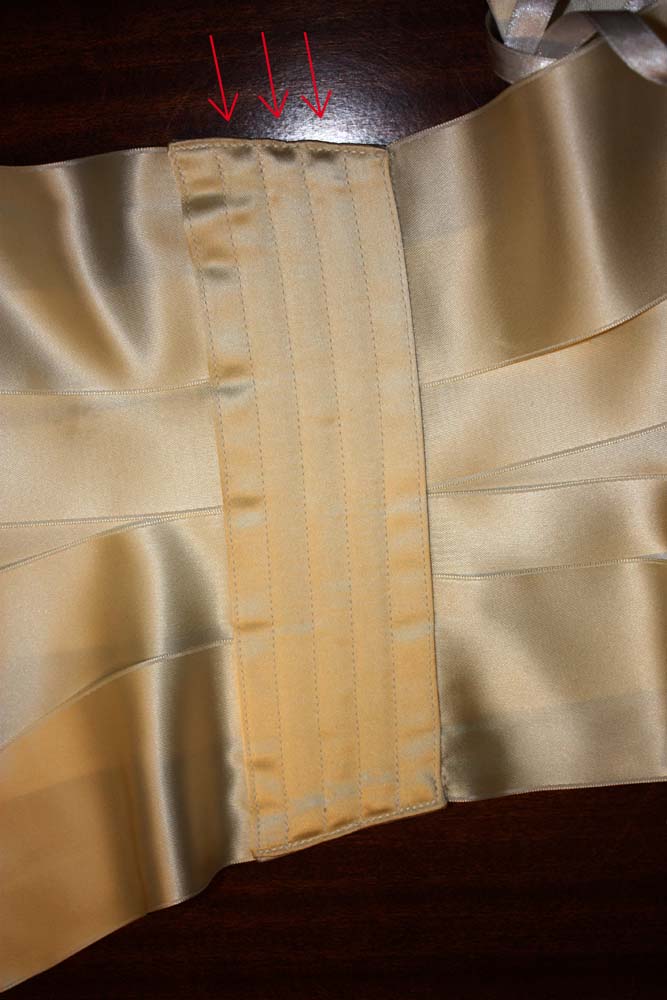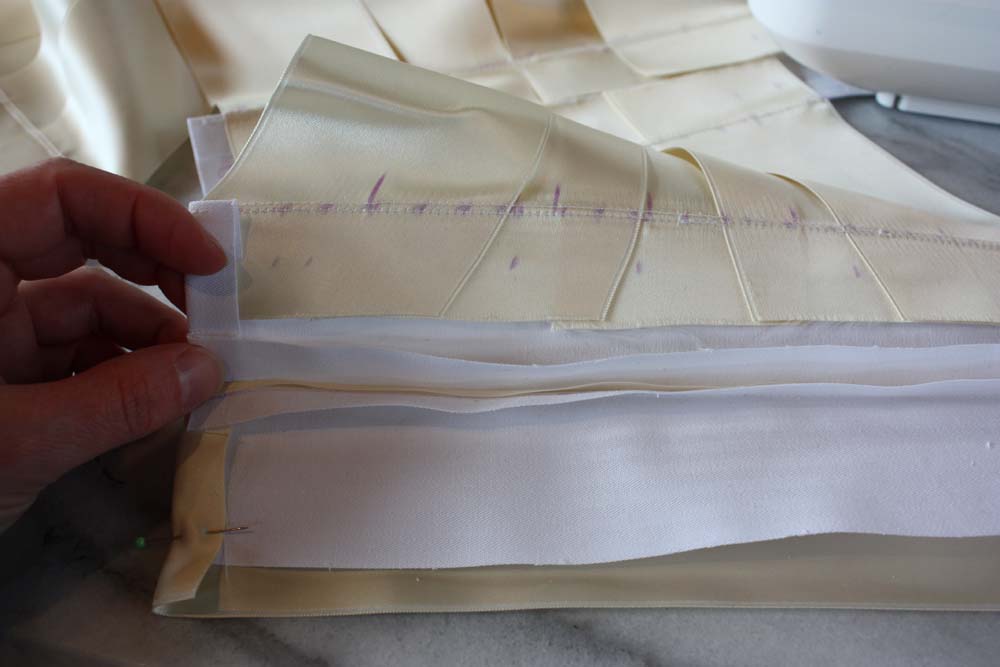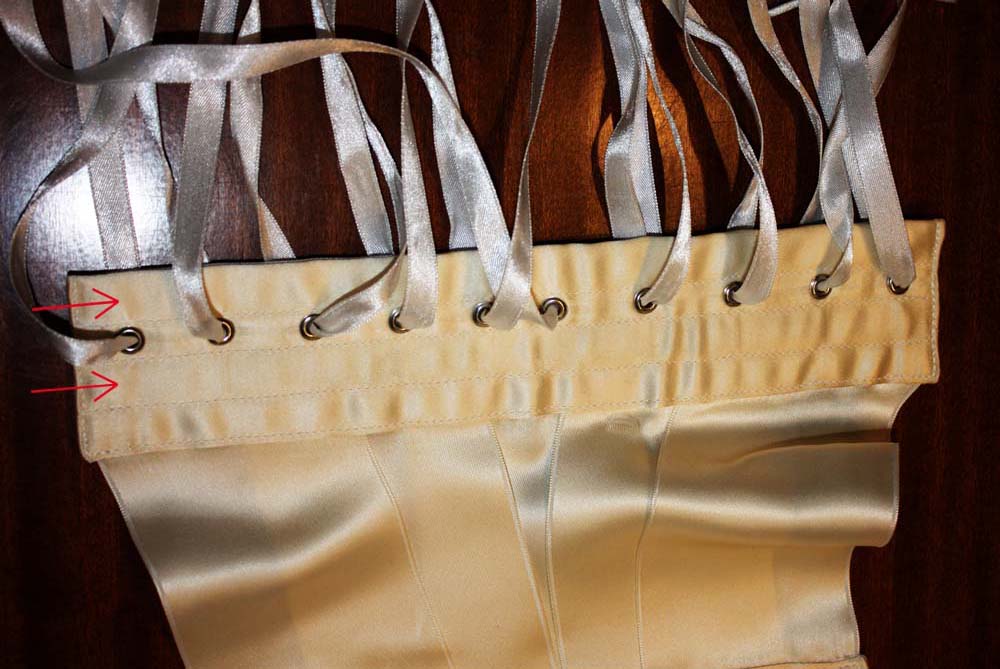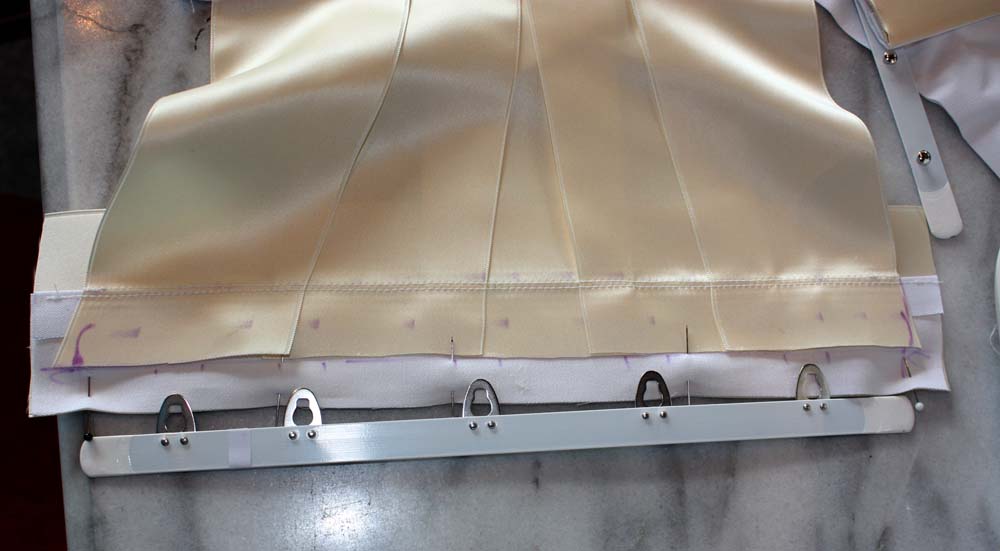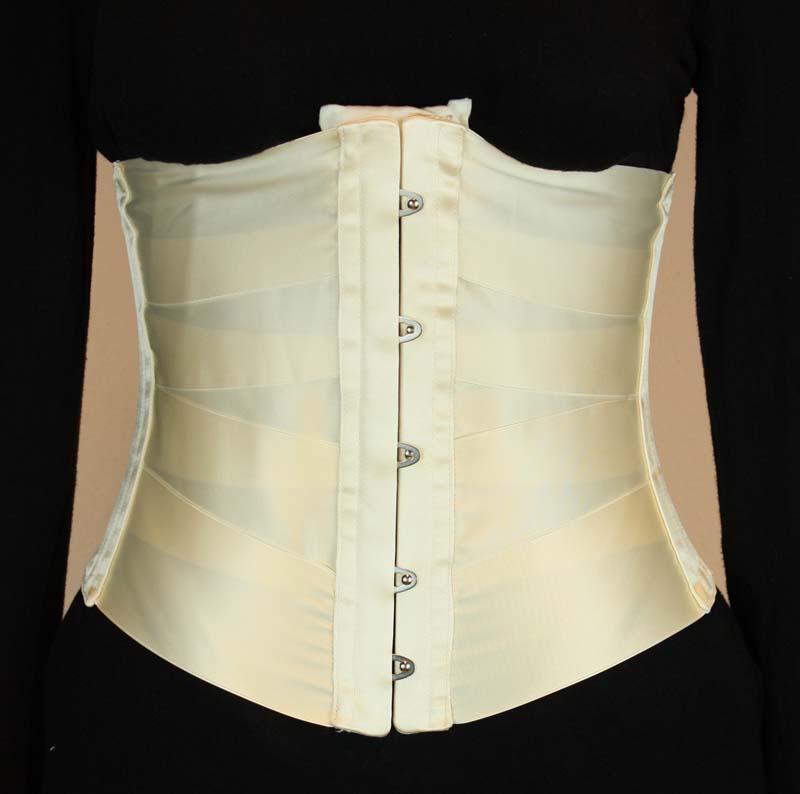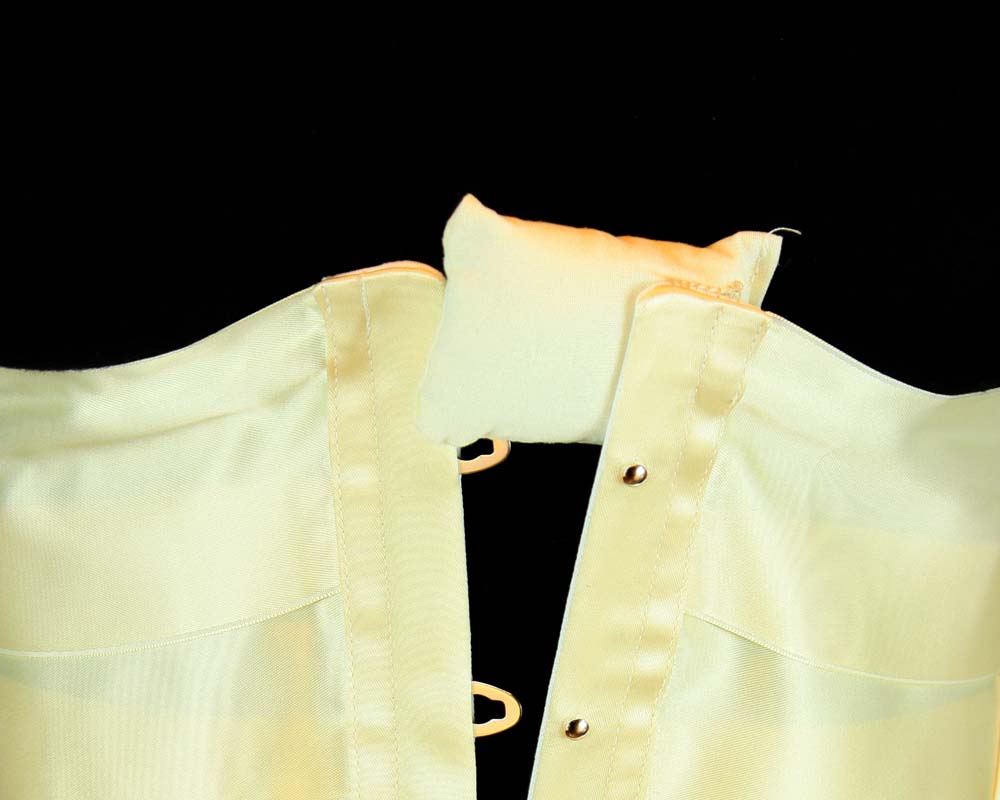Im Frühling versprochen, endlich fertig, der Schnitt für eine viktorianische Jacke (Paletot), frei nach einem Vorbild aus der Zeitschrift “Der Bazar” von 1876. Ich möchte euch hier ein kleine Anleitung mit vielen Bildern einstellen.
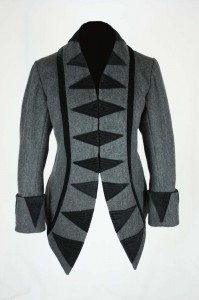
Teile zuschneiden, Futter für das Rückteil reicht nur bis zur Taille, Futter fürs Schößchen wird extra ein Streifen zugeschnitten (diesen Streifen erst einmal zur Seite legen). Futter und Oberstoff von Rückteil, seitl. Rückteil und seitl. Vorderteil werden als eine Lage verarbeitet, damit beim Nähen nichts verrutscht die Teile vorher gemeinsam versäubern. Vorderteil, Untertritt und äußere Manschette mit Einlage verstärken.
An den seitl. Rückteilen und den Rückenteilen in den Ecken Nahtzugaben genau markieren und zusammen nähen, an den Markierungen enden. Das Rückteil im Bereich des Schulterblattes etwas einhalten. NZ auseinander bügeln. Danach Schößchen an das seitl. Rückteil nähen. Darauf achten, dass die Naht oben in der Ecke innerhalb der Nahtzugabe liegt. Nahtzugaben auseinander bügeln, Schößchen falten und Kanten einbügeln. Seitl. Vorderteile an seitl. Rückenteile nähen, NZ auseinander bügeln (Achtung, Naht an der hinteren Mitte ist immer noch offen. Schulternähte schließen, Nahtzugaben auseinander bügeln.
Verzierungen für den Kragen vorbereiten. Am Schnitt Dreiecke für die Samtapplikationen anzeichnen, 1cm Nahzugabe dazugeben und abpausen. Die einzelnen Dreiecke durchnummerieren. Pro Dreieck jeweils 2xSamt + 2xFutter zuschneiden. Jeweils 1 Teil Samt und 1 Futterteil rechts auf rechts aufeinander stecken, nähen, im Bereich der Spitze mit kurzer Stichlänge nähen. Die kurze Kante bleibt offen. Nahtzugabe an der Spitze knapp zurückschneiden, wenden und bügeln.
Von der Samtseite die Dreiecke im Abstand von 1,5cm zur Kante absteppen, danach mehrmals innen in Nähfußbreite absteppen damit das Muster entsteht.
Die Dreiecke auf die entsprechende Position am Kragen stecken und in Nähfußbreite zur äußersten Naht aufsteppen. Zum Schluss entlang der Kante mit kleinen Handstichen annähen. Das Dreieck in der hinteren Mitte wird erst später aufgenäht.
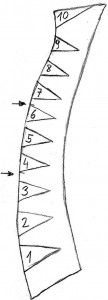
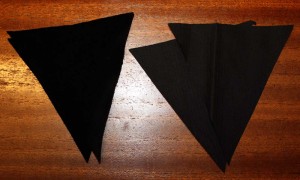
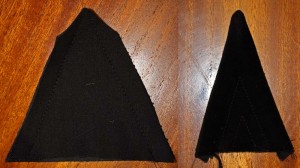
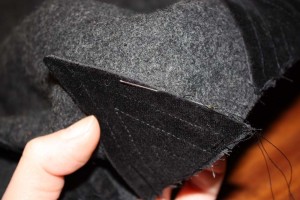
Kragenteile an die seitlichen Vorderteile nähen. Die Nahtzugaben werden in den Kragen gebügelt, die innere Nahtzugabe zurückgeschnitten.
Die Rückenteile nähen, achten, dass die Kragennähte genau aufeinander treffen. Unten genau in der Ecke enden. Nahtzugaben auseinander bügeln, das letzte Samtdreieck an der hinteren Mitte auf den Kragen aufnähen.
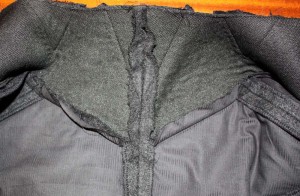
Samtband knapp neben der Naht auf das Kragenteil stecken und annähen.
Schößchen an der hinteren Mitte schließen, Nahtzugabe auseinander bügeln, den Futterstreifen an die Oberkante heften und gemeinsam falten. Kanten einbügeln. Die seitlichen Nahtzugaben des Futterstreifens einschlagen und mit einem Staffierstich an der Nahtzugabe des Oberstoffes festnähen.
